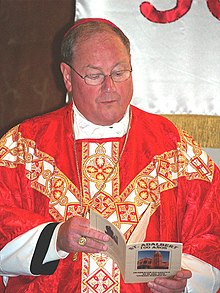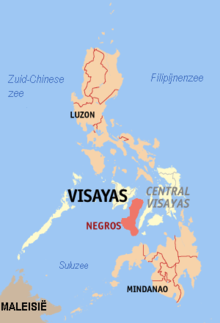Readings (New American Bible: Philippines, USA)
Gospel Mark 1:29-39 (Jerusalem Bible: Australia, England & Wales, India [optional], Ireland, New Zealand, Pakistan, Scotland, South Africa)
On leaving the synagogue, Jesus went with James and John straight to the house of Simon and Andrew. Now Simon's mother-in-law had gone to bed with fever, and they told him about her straightaway. He went to her, took her by the hand and helped, her up. And the fever left her and she began to wait on them.
That evening, after sunset, they brought to him all who were sick and those who were possessed by devils. The whole town came crowding round the door, and he cured many who were suffering from diseases of one kind or another; he also cast out many devils, but he would not allow them to speak, because they knew who he was.
In the morning, long before dawn, he got up and left the house, and went off to a lonely place and prayed there. Simon and his companions set out in search of him, and when they found him they said, 'Everybody is looking for you.' He answered, 'Let us go elsewhere, to the neighbouring country towns, so that I can preach there too, because that is why I came.' And he went all through Galilee, preaching in their synagogues and casting out devils.
An Soiscéal Marcas 1:29-39 (Gaeilge, Irish)
San am sin ar dhul amach as an tsionagóg d Íosa, chuaigh sé isteach gan mhoill i dteach Shíomóin agus Aindrias, in éineacht le Séamas agus Eoin. Bhí máthair chéile Shíomóin ina luí agus an fiabhras uirthi, agus ní dhearna siad aon mhoill gan labhairt leis mar gheall uirthi. Chuaigh sé anonn chuici, rug ar láimh uirthi agus thóg suas í. D’fhág an fiabhras í agus thosaigh sí ag freastal orthu.
Nuair a bhí an tráthnóna ann, tar éis luí gréine, thug siad chuige cách a bhí tinn agus na daoine a raibh deamhain iontu. Bhí an chathair ar fad cruinnithe timpeall an dorais, agus leigheas sé mórán a bhí tinn ó gach sórt galair, agus chaith sé amach mórán deamhan, agus ní ligeadh sé do na deamhain labhairt, mar bhí a fhios acu cérbh é.
D’éirigh sé ina shuí ar maidin tamall maith roimh lá, ghabh sé amach agus d’imigh go dtí áit uaigneach agus bhí sé ansiúd ag guí. Chuaigh Síomón agus a chompánaigh ar a lorg, agus nuair a fuair siad é dúirt siad leis: “Tá cách do do chuardach.” Dúirt sé leo: “Téanam go dtí áit éigin eile, isteach sna bailte móra atá ar cóngar, chun go mbeinn ag seanmóir iontu sin freisin, mar is chuige sin a ghabh mé amach.” Agus tháinig sé ag seanmóir ina gcuid sionagóg ar fud na Gailíle go léir agus ag caitheamh na ndeamhan amach.
+++
I'm writing this in Manila on Thursday. Earlier I came back from Alaminos, Pangasinan, a five-hour bus trip from Manila, heading north-west, near the Gulf of Lingayen that featured in World War II and an area where Columbans worked from 1935 utnil 2010. I went to visit two friends, Dr Tom Okner and his wife Mary Ann, who are part of a medical mission from Minnesota in Western Pangasinan District Hospital this week. I went up yesterday and when I arrived Tom was busy doing operations - he's an ENT specialist - while Mary Ann was preparing the schedules for the operations by different surgeons. Mary Ann invited me to go into the Operating Room but I declined. I'd have to dress up and, more importantly, I'd only be in the way.
The scene in the hospital reminded me of this Sunday's gospel. Jesus had gone straight to the home of St Peter from the synagogue. The medical team arrived at night on the long flight from Minneapolis/St Paul via Tokyo and were taken straight by bus to Pangasinan.Next morning they were at work. So many people were coming that it might not be possible to do surgery for everyone. The gospel tells us that Jesus 'cured many' but not all.
The medical team have little sleep each night and basically are working a 7 to 7 schedule, with some on call also at night.
Before I wemt to Alaminos I read an email from one of my closest friends - we started in kindergarten together - asking me 'as a person with some influence' to pray for the wife of another classmate who is having delicate surgery today. On the bus coming down I had a text message from a friend here in the Philippines thanking me for praying for his mother-in-law who was critically ill lately but has improved and added a request for prayers for his older brother who is an alcoholic and going through a bad patch at present. He also asked for prayers for his sister-in-law.

When I arrived back in Manila I found an email from Gee-Gee Torres Dimayuga (above with son Mikko), the former assistant editor of Misyon who is now living near Atlanta. I officiated at the wedding of Gee-Gee and Miggy in Manila a few years ago. They have two children, Mikko and Mica. Due to an accident during the birth procedure Mikko was born with multiple disabilities. Gee-Gee told me that Mikko is once again in hospital with RSV (Respiratory syncytial virus) which, she says, 'is just like an ordinary cold for most children, but with children like Mikko, it becomes serious and more complex'. Young Mikko knows the inside of the ICU more than most of us.
I am astonished and humbled at the number of times people thank me for my prayers. The gospel tells us that before dawn Jesus 'went off to a lonely place and prayed'. That is the line that always draws me the most in this and in similar passages in the gospels. And I usually find that early morning is the best time for me to spend time in personal prayer. I know
Tom and Mary Ann to be persons of deep faith and it is basically their generous faith that has brought them to the Philippines this week. But if I were to undergo surgery under Tom I wouldn't want him to go 'off to a lonely place and pray' at the time of the operation. Nor would he and his patients appreciate it if I tried to do his job.
All of us are involved in the healing mission of Jesus, surgeons, physicians, nurses, administrators, family members, parents who spend hours with a sick child, sacrificing their sleep, those praying for the sick and priests who administer the sacrament of the sick to patients.
As it happens, nearly 30 years ago I spent three months doing clinical pastoral education in a large hospital in Minneapolis, working as a chaplain to all the patients and staff on my floor. It was a great experience. I found the faith of some of the elderly Lutheran patients - Minneapolis is largely Scandinavian and Lutheran in background while St Paul, the other 'Twin City', is largely German-Irish and Catholic - very similar to that of elderly Irish Catholics. It was a joy to pray with them and to realise the strength and depth of the faith of some.
It was a joy too to help a woman in that hospital over a period of weeks come to terms with the news that she had terminal cancer, to celebrate the sacraments with her, to be with her husband and adult children as they tried to come to terms with this situation, and to be invited to celebrate the funeral Mass.
We are all part of the Body of Christ. We are all called by God to share in the healing power of Jesus the Risen Lord whether as surgeons, persons who make schedules for patients, individuals who pray - though all are called to prayer in their lives. The father of my friend Mary Ann was a distinguished doctor who died before Christmas aged 90 and after 66 years of marriage. When I first met Dr Stephen Balshi more than 40 years ago I remember a comment he made in passing that showed how important for him it was that the priest be faithful to prayer, especially to the Breviary, also known as the Prayer of the Church, The Divine Office.
Those who thank me and the many others who pray for them in times of sickness also thank the doctors and other medical professionals who help them recover. The Jesus who healed many sick persons in the evening and the Jesus who went off to pray before dawn after only a few hours of sleep was the same person. He is present now as the Risen Lord, as our healer, in the hands of the surgeon, in the kind word of the nurse, in the concern of the administrator reaching out to as many as possible, in the love of anxious parents, in the priest who brings the sacrament of the sick, in all who pray for those who are suffering.























